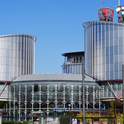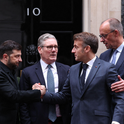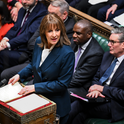The European Union and Nato are reinventing themselves for the next decade. In the last week, they have shown welcome signs of resilience, despite Vladimir Putin and fierce economic and immigration headwinds.
First, Mario Draghi’s report on European competitiveness set out a blueprint for an active industrial policy—essentially Bidenomics for Brussels—providing a bold agenda for the next European Commission. It is a call for massive public and private investment to turn decarbonisation into a Europe-wide green revolution for jobs and productivity.
Draghi’s report may not be as conceptually novel and sweeping as Jean Monnet’s founding vision of industrial integration and free trade in the 1950s, and a generation later Jacques Delors’s plans for the single market and monetary union in the 1980s and 1990s. But that is largely because of its emphasis on strengthening these existing pillars of the EU and making them fit for the future, for example by a hardheaded Europe-wide approach to defence procurement and competition from China.
Second, Ursula von der Leyen unveiled her new Commission, which looks to be stronger and more united than her last one. Kaja Kallas, the former prime minister of Estonia, will make a resolute new foreign policy chief, dealing with Putin, defence and Ukraine. Von der Leyen herself provides continuity, while Stéphan Séjourné’s last-minute replacement of Thierry Breton as French Commissioner and industrial policy supremo may align both the Commission, and the governments of France and Germany, more closely on the big challenges of energy, AI, tech regulation and industrial strategy. Breton had a notoriously poor relationship with von der Leyen, while Séjourné, the outgoing French foreign minister, is likely to be more collegiate.
Third, Europe’s leaders are strengthening their support for Volodymyr Zelensky and Ukraine. Keir Starmer was in Washington to discuss a relaxing of Nato limitations on the deployment of its weaponry by Ukraine, while von der Leyen took forward plans for huge further loans to Kyiv irrespective of the result of November’s US presidential election. Both initiatives are works in progress, but they indicate that Europe is unlikely to roll over and acquiesce in a Trump administration seeking to abandon Ukraine to Russia.
All this is a counter to the weakness of the existing governments in France and Germany, both alike humiliated by the success of populist parties in recent elections. Britain and Poland have elected fairly strong centrist governments over the past year. This has strengthened the European anti-populist movement, while Giorgia Meloni of Italy has shown herself to be a European pragmatist rather than an Orbánite disruptor, not least in her approaches to Putin and immigration.
The two greatest threats to Europe’s prosperity and security are Putin and the weakness of the German economy. These could be made significantly worse by further internal European crises, such as a disintegrating EU beset by rampant populism across the continent. So far, this wider crisis has been kept at bay and there is reassuring evidence of European resilience and reinvention. But it is fragile, and a Trump victory could change the outlook even before the year’s end.













